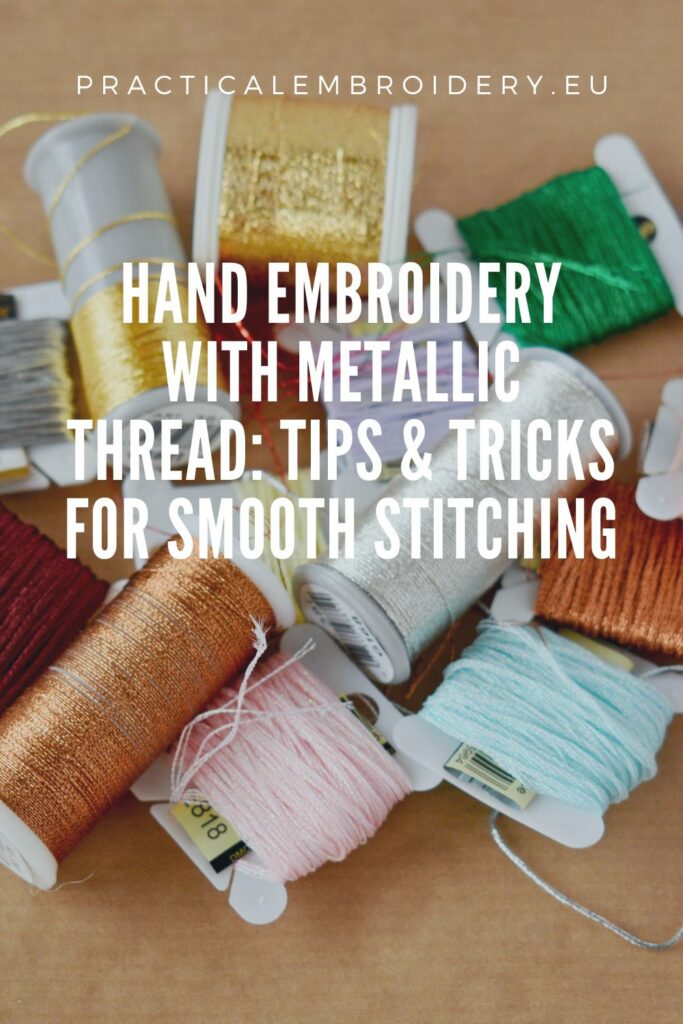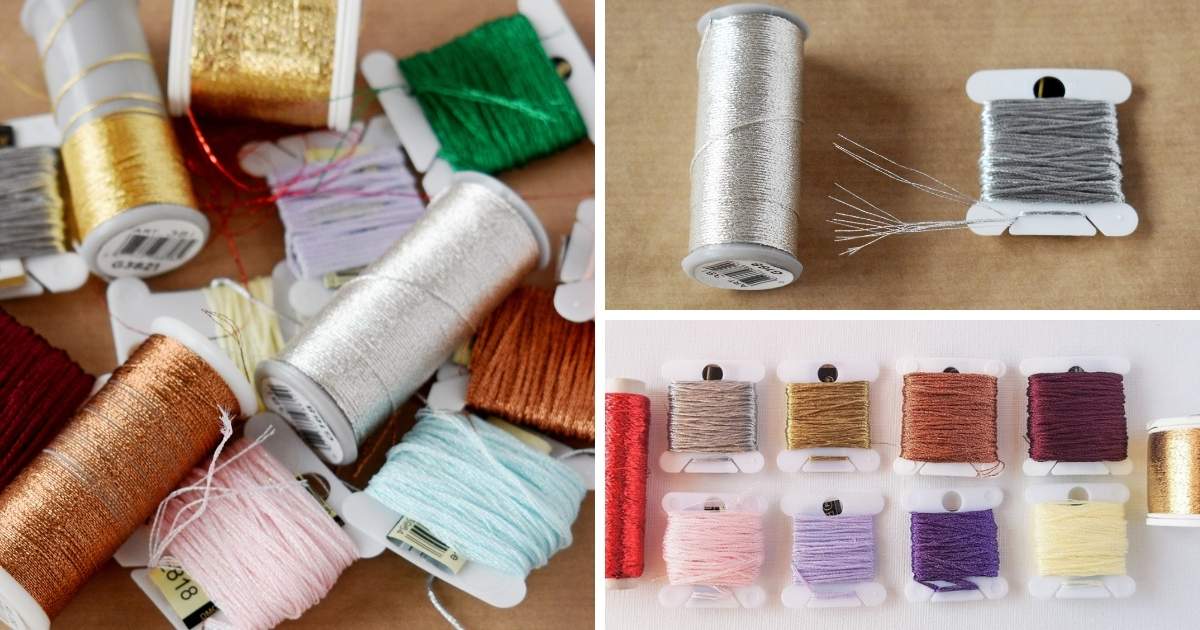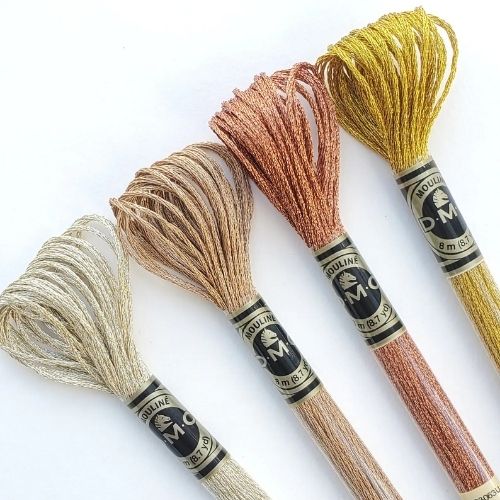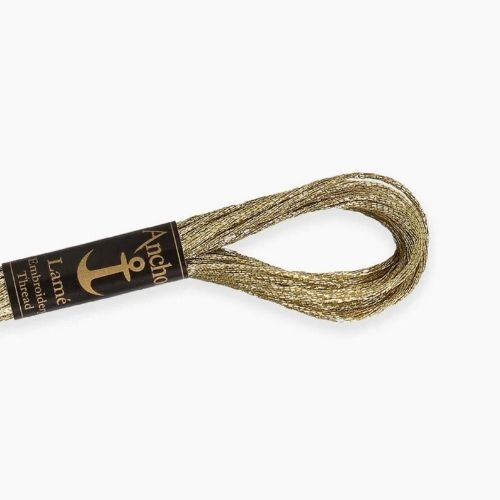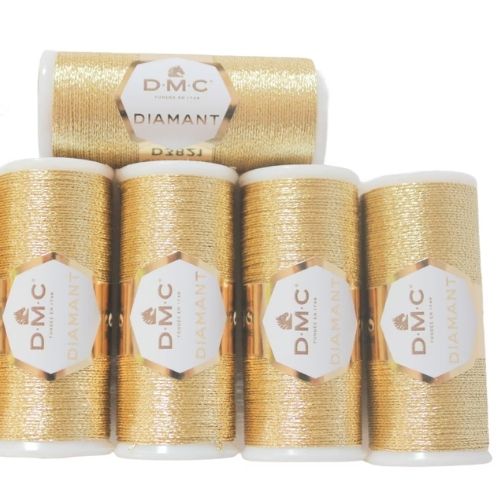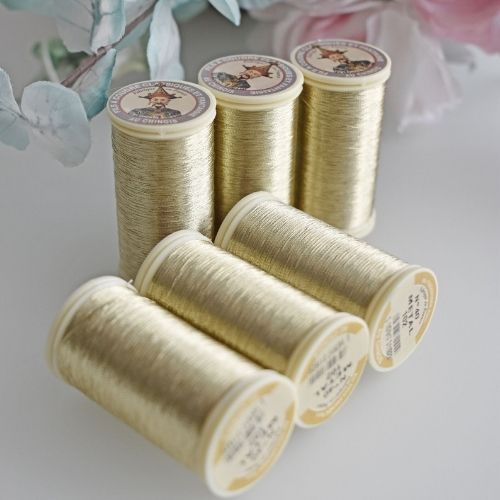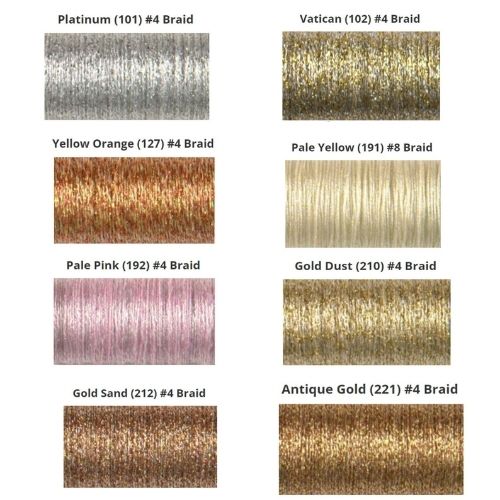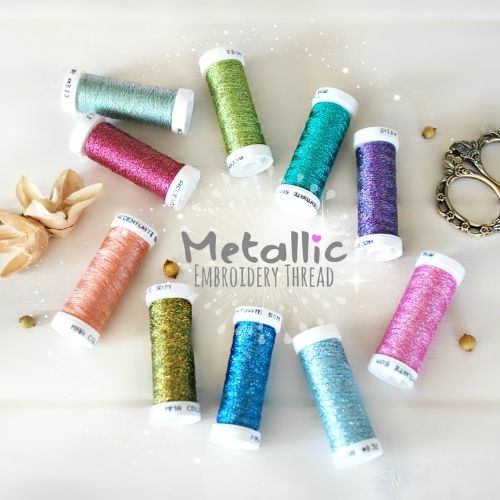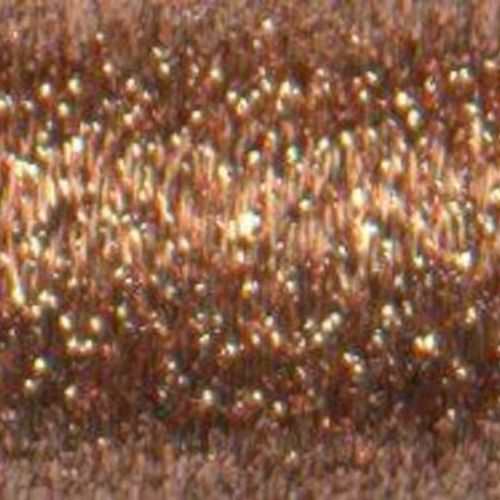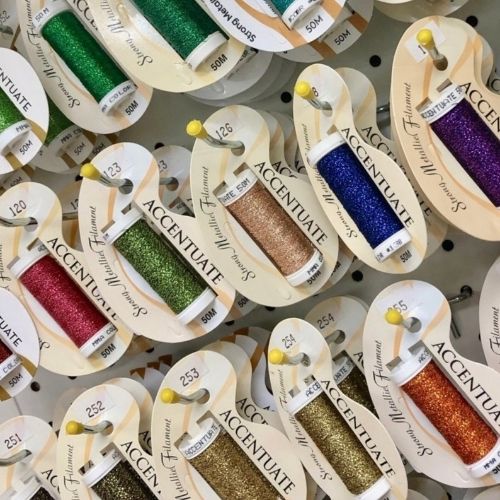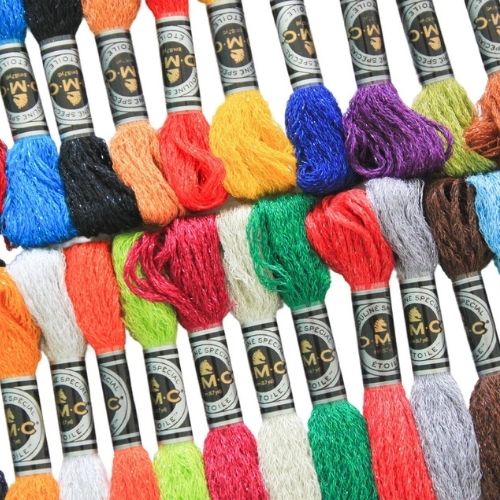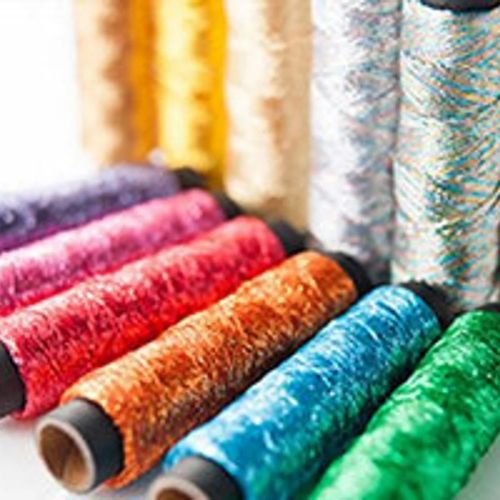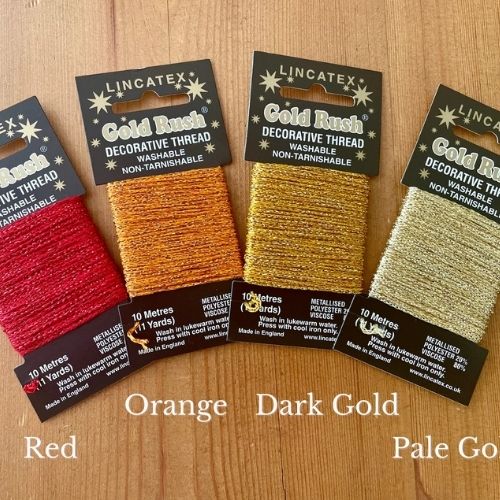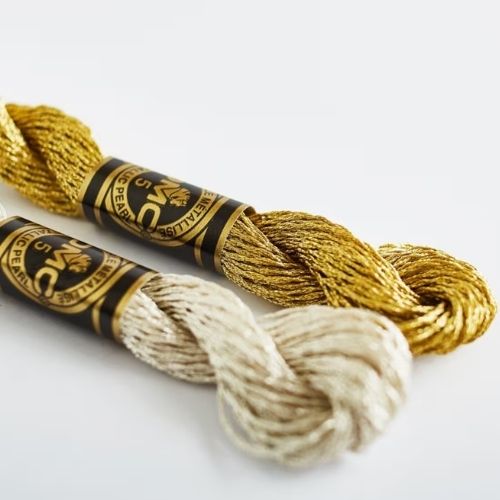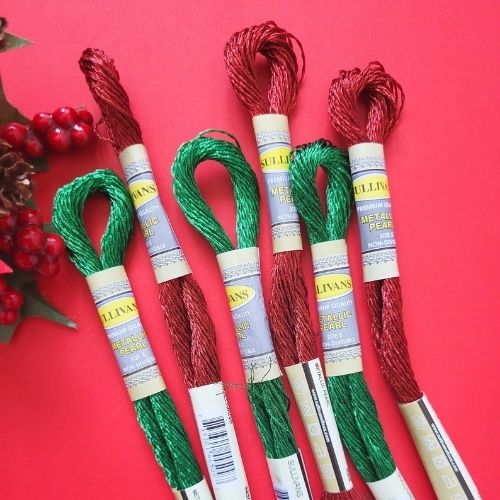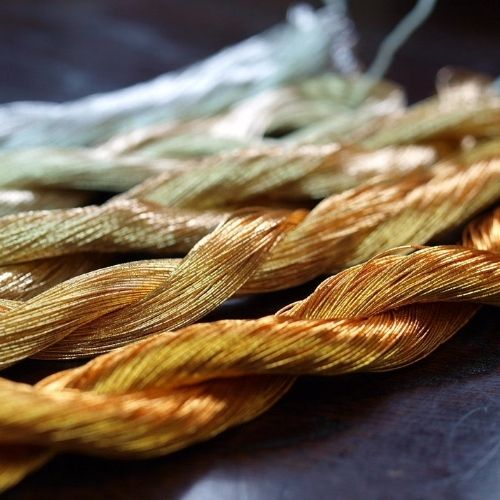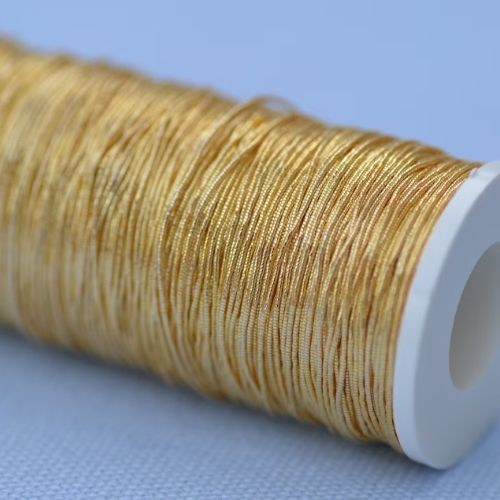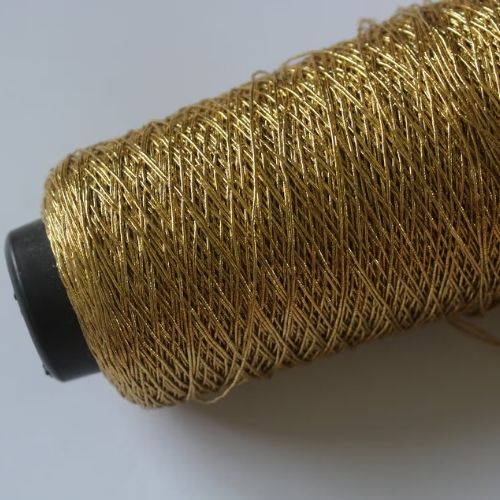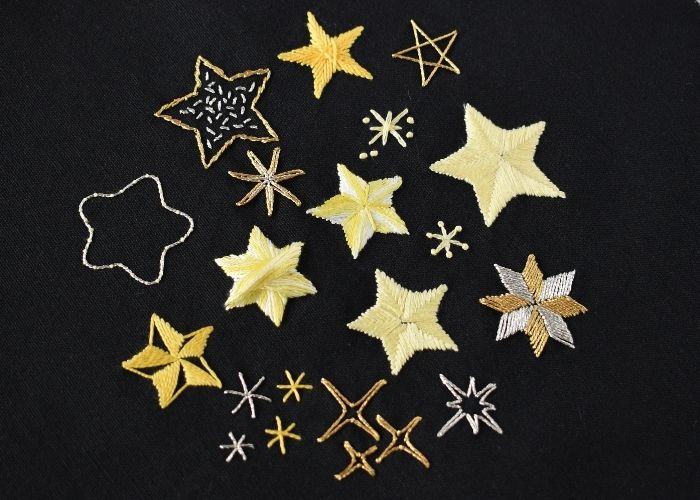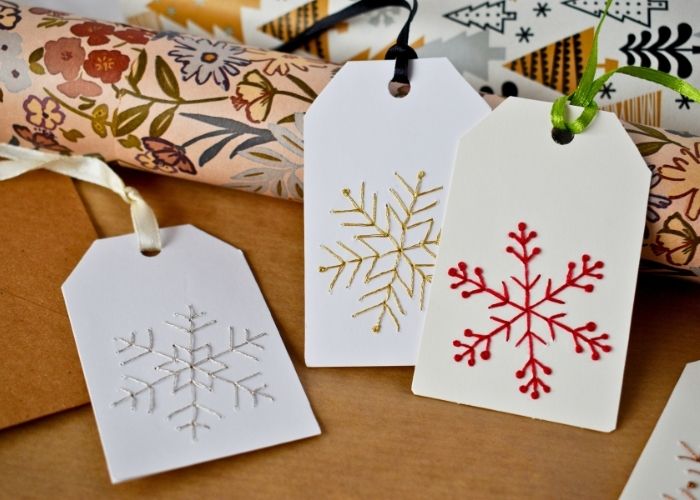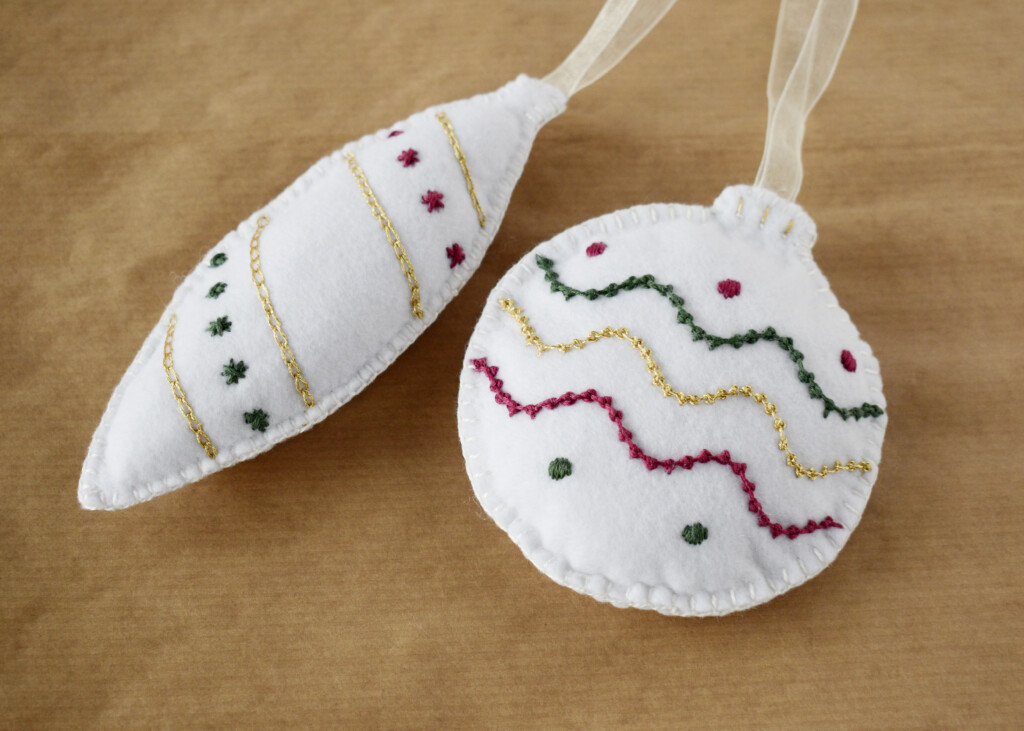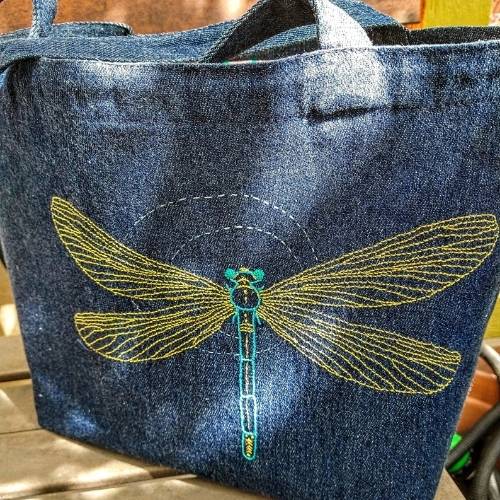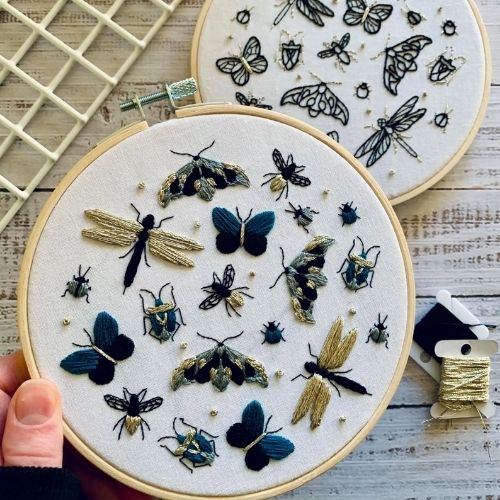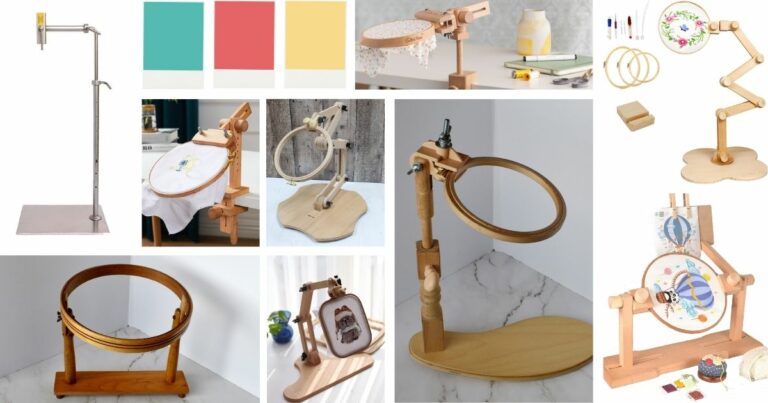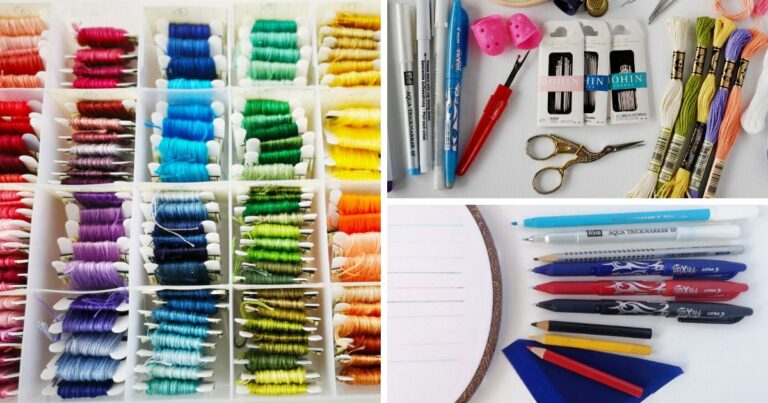Hand Embroidery With Metallic Thread: Tips & Tricks for Smooth Stitching
Metallic embroidery thread looks stunning – it adds sparkle and dimension to any hand embroidery project. At the same time, hand embroidery with metallic thread can be frustrating. These sparkly threads tend to fray, tangle, and shred more easily than cotton or silk floss. And sometimes it gets so messy that you want to give up on metallics altogether, right?
I gathered all the best advice I found online and the tricks I use to tame this thread in one place, so you can try them all, learn how to embroider with metallic thread, and develop your own method for working with metallic effect threads.
Types of metallic threads for hand embroidery
Metallic threads are a group of hand embroidery threads and floss that have a metallic effect and that you can use for various needlework purposes. Some threads are easier to use, and others are more specific to the task.
Metallic embroidery floss
This thread resembles a standard 6-strand cotton embroidery floss. You can use all the strands of it or separate it into individual strands, just like you do with stranded cotton floss. This thread is flexible and glittery. You can use it as is, or mix metallic floss strands with cotton floss for a more subtle look.
You can use this metallic floss for any hand embroidery project with metallic thread – from cross stitch to surface embroidery, blackwork, or crewel work.
Braids and cords
Metallic braids and cords are another group of metallic embroidery threads used for surface embroidery. These threads are smooth, tightly woven, or braided metallic threads that cannot be separated into strands.
They come in many sizes and colors, and you can use them for both stitching and couching.
The best-known and most widely used are DMC Diamant and DMC Diamant Grande metallic threads. The thickness of the Diamant is equivalent to two strands of embroidery floss. Still, it is much easier to use as it is not divisible. Diamant Grande is as thick as a doubled Diamant thread.
Blending filament
This metallic thread is a very fine, flat, and sparkly filament. It is not meant to be used alone; it should be combined with another thread, such as cotton or wool embroidery thread.
Blending filament will help you create an original thread that is less challenging than a complete metallic, but still adds sparkle and a festive mood to your stitching.
Soft metallics
These threads are softer, knitting-yarn-like metallic threads. They are often used in canvaswork or modern surface hand embroidery.
These threads are softer and more flexible than true metallics, but still add sparkle and shine to the embroidery.
Brands like Cosmo Nishikiito or DMC Étoile Shimmer have softer metallics that stitch more easily.
Metallic Perle
Perle metallic is a twisted, non-divisible, shimmery thread you can use in hand embroidery projects. It is softer than metallic cords or floss and works well in projects that combine cotton perle with metallic perle.
Passing thread and the Japan thread
Passing thread is a fundamental thread in goldwork. It is a cotton or silk core thread wrapped with a metallic strip. Very similar to it is a Japan thread. In this case, a strip of gilded paper is wrapped around the fiber core.
Note that you are not meant to embroider with these threads. You should couch the passing thread or Japan thread to the surface with another, more flexible thread.
Best fabric for hand embroidery with metallic threads
When you plan your hand embroidery project and choose a metallic thread to stitch with, pay extra attention to the fabric you will use.
The metallic component of the thread tends to stick to the fabric fibers and to itself, making stitching more difficult. One way to make your stitching experience easier is to choose a suitable fabric.
First, take a look at the thickness of the weave. If the thread count is very high and the weave is thick and dense, you will have a hard time stitching with metallic threads. It means that every time the thread passes through this tightly woven fabric, it will stick to the fabric and get consumed quickly. This high friction will result in resistance, tangling, and frequent thread breakage.
For more comfortable stitching, opt for the lower thread count. Fabrics like linen or linen-cotton blends usually work best for metallic embroidery projects.
Another thing to consider when choosing the fabric: its softness. Coarse fabrics can catch and shred metallics fast, making the stitching experience less enjoyable. Choose an even weave and a smooth fabric, and you will be fine.
Finally, avoid fabrics with high pile – metallics do not cover the surface well; therefore, high pile fabrics will worsen the look of the stitching.
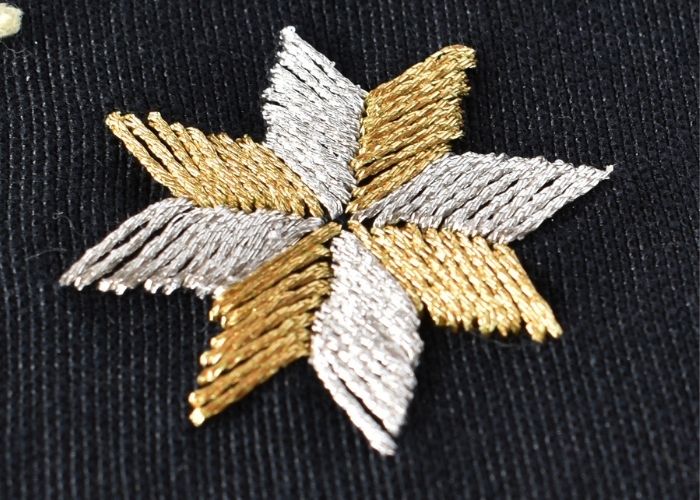
Best needles for embroidery with metallics
The third component for a smooth stitching with metallic threads is your needle. Here are my tips for the best stitching experience:
- Use a larger needle. Bigger tapestry or embroidery needles are often better than fine ones. A bigger needle makes a slightly bigger hole in the fabric; therefore, the thread experiences less friction – it tangles less and glides better in the bigger hole made by the needle. If you are not sure about the needle size, test it. If you feel resistance and a lot of noise when the thread passes through the fabric, try using a bigger needle.
- Try a needle with a bigger eye. It might be hard to thread the needle with metallic threads. Instead of using an embroidery needle, try a chenille needle. It has a bigger eye – easier to thread and makes a bigger hole in the fabric.
- Change the way you thread the needle: instead of trying to push the thread into the needle, hold the freshly cut thread tight between your fingers, with only a tiny tip out, and move the needle onto the thread.
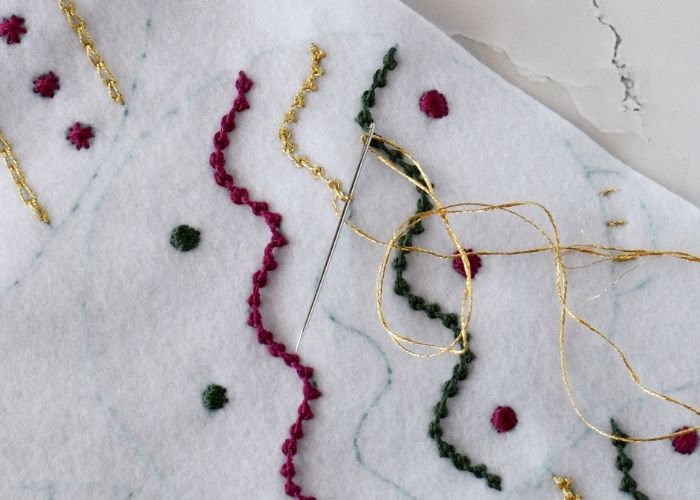
Tips for handling metallic threads
After you select the thread and the fabric and choose a suitable needle size, follow these tips to make your stitching fun and relaxing.
- Use shorter lengths of thread. Cut the thread into ~30 cm (~12 inches) pieces, instead of the usual ~45 cm (~18 inches). Metallics fray quickly, so you want to limit how many times you pass the thread into the fabric. Besides that, the loose end of the thread will start to unravel and tangle as you stitch. Shorter thread lengths prevent wear and knotting.
- Condition the thread. Run your metallic thread through a thread conditioner (like Thread Magic, beeswax, or silicone-based conditioners) to reduce tangling and friction.
- Separate strands carefully. If you plan to use several separate stranded metallic threads, follow this procedure: First, separate the threads you plan to use one by one. Then, pass each strand through your fingers to relax the thread. Finally, recombine them gently to avoid snarls.
- Loosen the twist as you stitch. Some embroidery techniques will make your thread twist (or untwist) as you stitch. Do not wait too long for the thread to tangle. Let the needle dangle every so often to let the thread untwist.
- Change the spot where the thread is folded. After a couple of passes into the fabric, at the point where the thread is folded around the needle, your metallic thread will start to show the signs of wear. Eventually, this spot will get so damaged that it will show, and you will have to discard that piece of thread. Avoid it by adjusting the needle position and the fold.
How to embroider with metallic threads

After we discussed the threads, the fabric, the needles, and how to handle metallic threads, let’s take a look at what else we can do to make stitching with metallics a smooth experience. Here are my best tips:
- Slow down. Metallic threads don’t like rushing. Use smooth, steady motions to make each stitch. Break the stitch into steps and make a step at a time. For example, when you make a Chain Stitch, tighten the loop of the thread around the needle by pulling the thread on the back of the fabric first, and pull the thread to the surface only after the loop is tightened.
- Manage a fabric tension. Keep your fabric drum-tight in your hoop or frame so the needle passes through cleanly.
- Use a laying tool. This tool is super helpful if you use more than one strand of the metallic thread or you combine metallics with other threads. A laying tool helps maintain even tension on all the threads and keeps the strands flat and even on the fabric. You can use a big, blunt darning needle for this or get a beautiful, specialized laying tool.
- Work with a gentle hand. Don’t tug too hard when pulling through the fabric; instead, ease it through.
- Use the railroading technique. If you use a metallic thread for cross stitch, pass the needle between strands as you stitch to keep them lying neatly side by side. This may slow you down a bit, but it might be worth the effort as the thread will lay nicer and tangle less.
- Choose the stitches wisely. Metallic thread tends to stick to itself; therefore, the knots and highly twisted stitches like French Knots or Bullion Stitch might be challenging to make.
- Test. Before you start stitching on the good fabric, test the thread, the needle, and the stitches you plan to make on the drop cloth. This way, you can adapt the design and stitches to the materials you have, rather than fighting them.
Hand embroidery projects with metallic threads
If you want to incorporate metallic threads into your hand embroidery projects, start with small shiny details. As you get more confident, you can add more and more golden or silver details and make your projects really shine.
Note that metallic threads are relatively rigid; therefore, avoid embroidering clothing, such as shirts, with them, as they may irritate the skin.
You can start learning metallic embroidery with these free hand embroidery projects I created for this blog:
Also, check out how other hand embroidery artists incorporate metallic threads into their patterns:
Over to you
Metallic threads for hand embroidery are know for being difficult to stitch with. But the golden and silver shimmer is so attractive and incorporating some shine and glitter into our hand embroidery is so tempting!
In this article I share all I know about the hand embroidery with metallic threads, in the hopes that it will inspire you to try stitching with these specialty threads and will make your stitching smoother and more pleasant.
Project after project, one tiny sparkly detail after another, and you will be an expert in metallic embroidery!
More about hand embroidery tools and materials on this Blog
